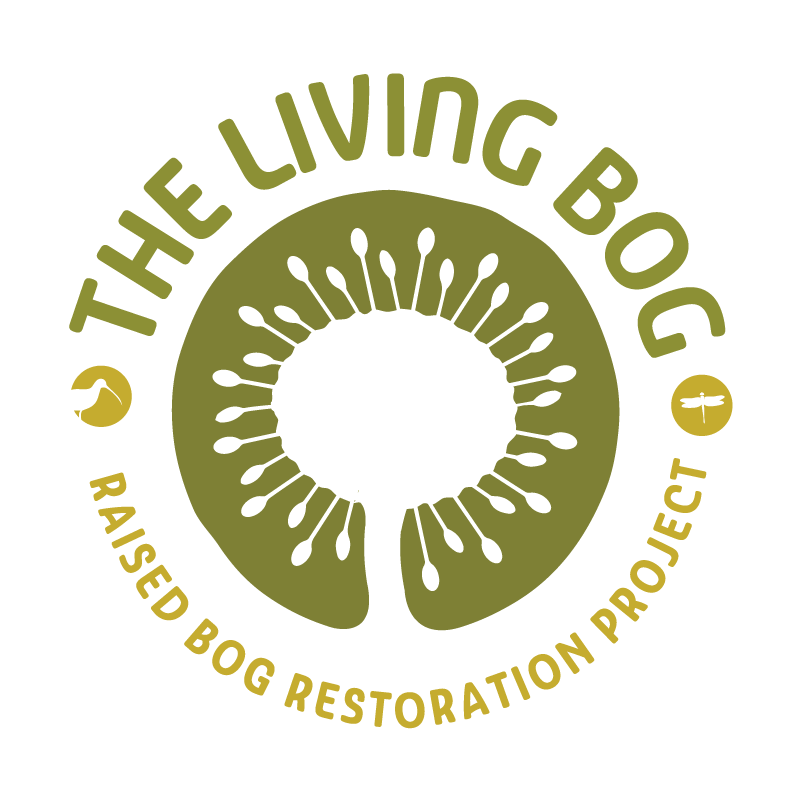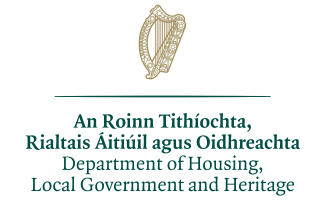The Living Bog had a very active Heritage Week, with a number of key events happening throughout the period of August 18 – 27.
All of our events were a success with numbers way above what we expected or estimated, so thank you to one and all who attended, or even checked in online. Valuable community and heritage links are established during Heritage Week, so it was great to bring the word of raised bog restoration and The Living Bog to so many.
The week started off on Friday August 18 with The Living Bog being chosen as a showpiece Heritage Week provider by radio station Midlands 103. Their top-rated show, the Will Faulkner Show which airs 9am-12pm did an outside broadcast from Clare Bog Visitor Centre to celebrate the start of Heritage Week, and Ronan Casey from the Living Bog and Rebecca Dobson from Clara Visitor Centre were both on air to bring the bogs to the nation. Also on the show were Heritage Officers from Counties Offaly, Westmeath and Laois. It was a great opportunity to talk abo0ut the Living Bog and raised bogs in general, and it was a pleasure to do.
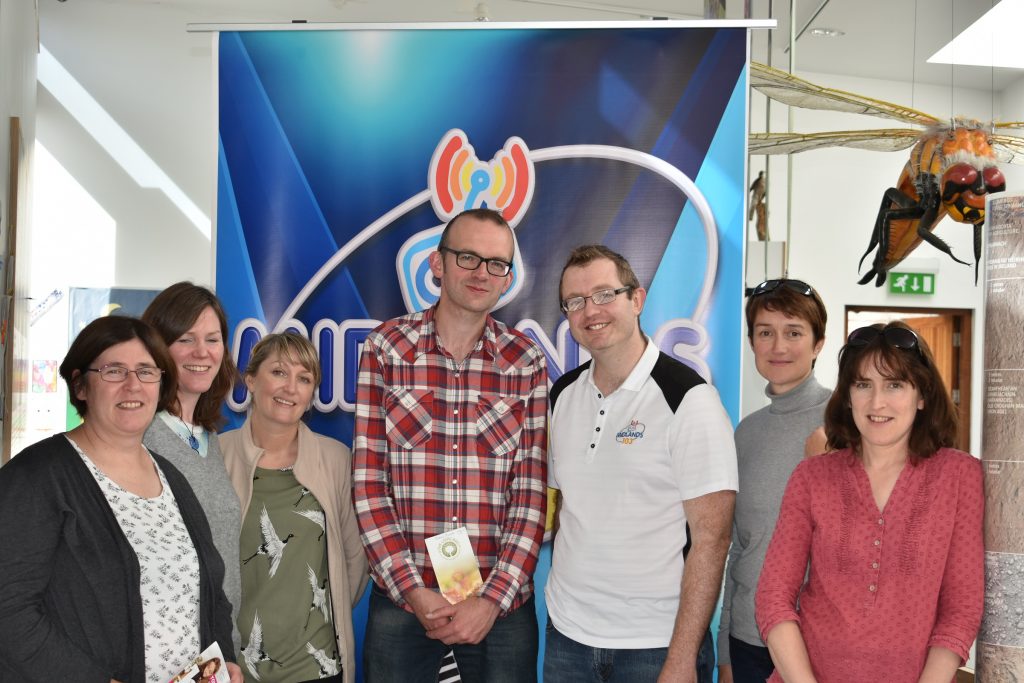
Catherine Casey, Laoise Heritage Office, Alison Delaney and Rebecca Dobson, both Clara Bog Visitor Centre, Ronan Casey, The Living Bog, Will Faulkner, Midlands 103, Amanda Pedlow, Offaly Heritage Officer and Melanie McQuaid, Westmeath Heritage Officer at Clara to kick off Heritage Week in the midlands!
One of our signature events was our ‘LIFE on Westmeath’s Bogs’ talk in Streete Parish Park & Community Centre (close to Garriskil Bog SAC). Here, we hosted an informative evening talk with Ronan Casey (The Living Bog), Manchán Magan (author/broadcaster) and Trióna Finnen (NPWS) talking about all aspects of the bog story – from restoration work and the Living Bog to the cultural significance of bogs to the life that raised bogs support. Over 60 attended the event, which was supported by Westmeath County Council, and attendees came from the local communities in Streete, Lismacaffrey, Rathowen and Ballinalack as well as Mullingar, Longford, Dublin and rural Westmeath.
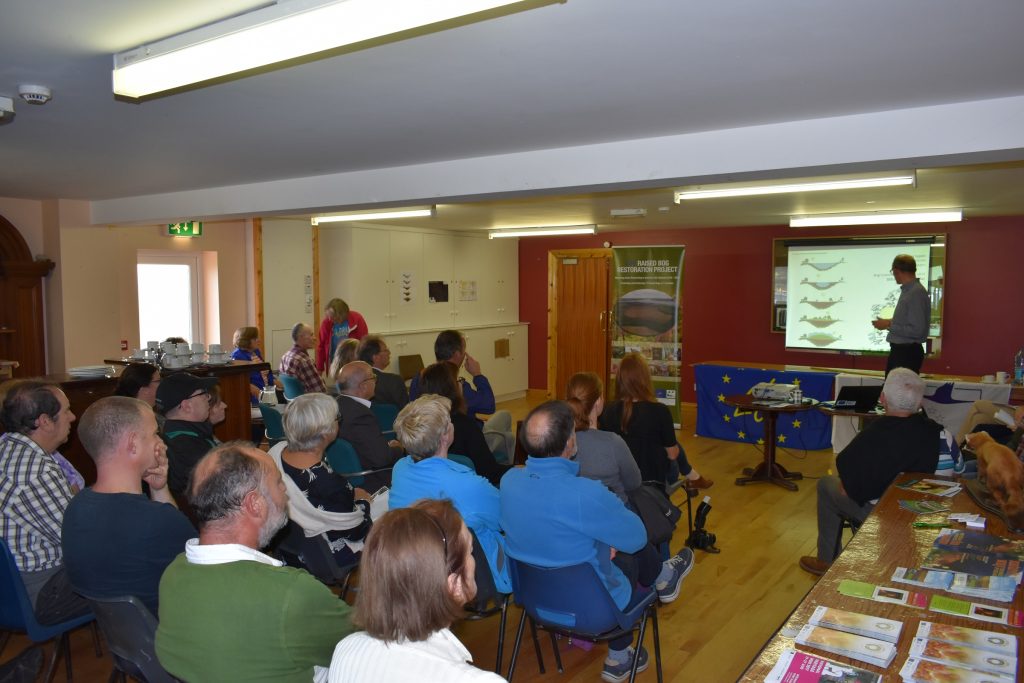
A section of the crowd at Streete Parish Park Community Centre enjoying the ‘LIFE on Westmeath’s Bogs’ Heritage Week 2017 event on Wednesday August 23
The venue was perfect with delightful cakes and tea/coffee rounding off the night, and the event received very positive press coverage before and after, particularly in local newspapers the Westmeath Topic and the Westmeath Examiner. An extensive poster campaign in North Westmeath also worked fine.
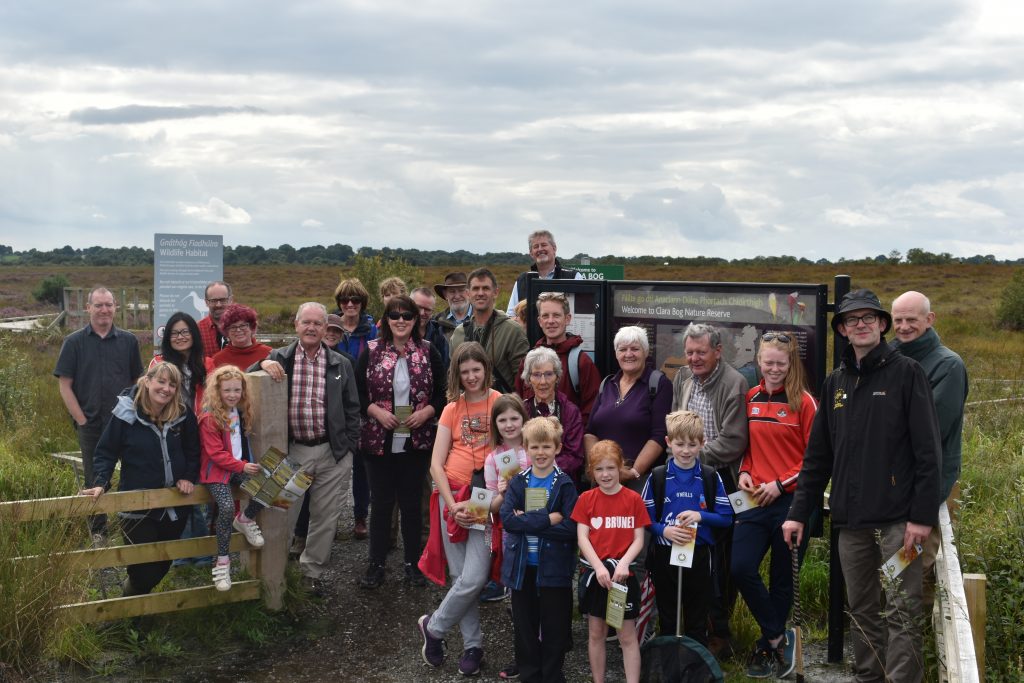
A section of the Heritage Week crowd from our ‘LIFE on Clara Bog’ walk and talk on August 25, 2017
Two bog walks were organised on Clara Bog SAC in Co. Offaly. The first walk on the Wednesday was hit by bad weather, but we ploughed on regardless! However, better things were to come later in the week with the Friday walk a big success with over 40 in attendance, with tourists from Japan, visitors from Dublin and others from all over the midlands among those enjoying an informative guided walk from Ronan Casey (The Living Bog) and Rebecca Dobson (Clara Bog Visitor Centre). The Tullamore Tribune newspaper tagged along and the event received good coverage in it and on Midlands 103 FM.
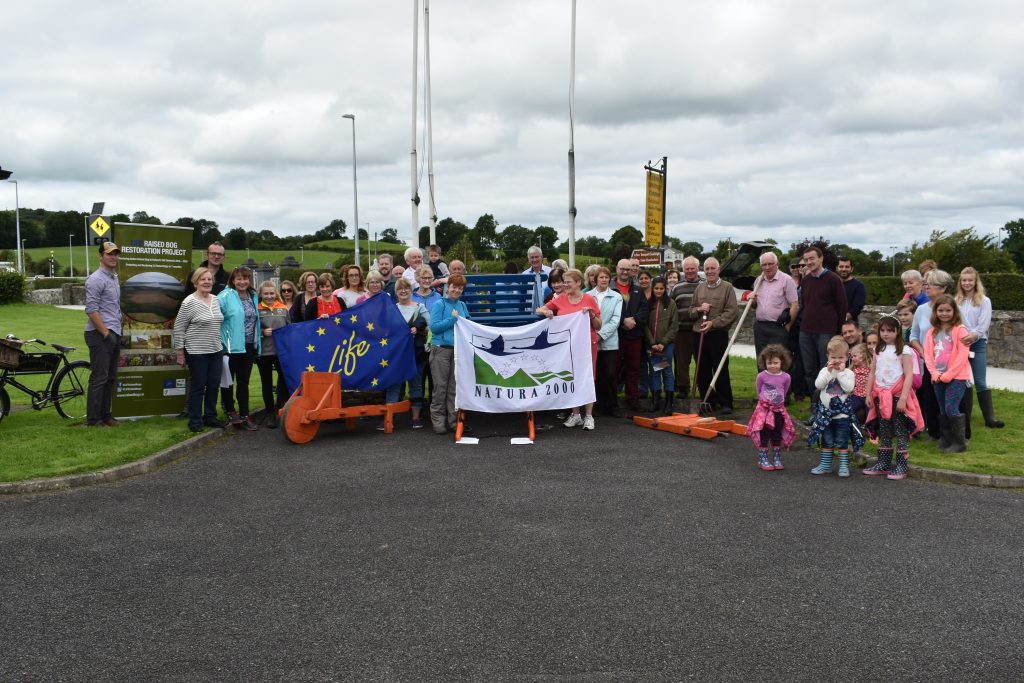
A section of the large crowd which enjoyed a walk and talk on Killyconny Bog SAC during our ‘Mullagh Day on the Bog’ event for Heritage Week 2017
Another big Living Bog showpiece event was our revival of Mullagh Day on the Bog. The long-planned revival of the former local festival celebrating Killyconny Bog SAC took place on Saturday August 26th and saw the local St Kilian’s Heritage Trust committee assisting Ronan Casey and Jack McGauley of The Living Bog. The enjoyable day featured old turf-cutting equipment displays and talks about the days of old on the bog at St Kilian’s Heritage Centre in Mullagh town, before the crowd were bussed out to Killyconny Bog SAC for a walk and talk by Ronan and Jack. Over 50 were in attendance and as the lads got the walk underway on the bog, there was more left waiting at the Centre, such was demand! The crowds were not just local, with tourists from Asia and America, plus people from Derry, Dublin, Kells, Navan and Drogheda enjoying the walk. There was a great atmosphere on the bog and in the town on the day, and it is hoped the event will be built on for next year.
To tie in with the event, we re-posted videos by local man Jim Smith to YouTube of old events from 1997 – 1999. These have attracted a lot of attention. A photograph display at St Kilian’s Heritage Centre was also well-received.
A few weeks before the event, a special radio outside broadcast from Mullagh Heritage Centre was arranged by Shannonside Northernsound’s Joe Finnegan Show. Ronan Casey from The Living Bog was invited along to talk about ‘Mullagh Day on the Bog’, the Living Bog and the St Kilian’s Heritage Trust event on Killyconny Bog SAC. The broadcast went down well, and Ronan has been back on the station since talking about The Living Bog.
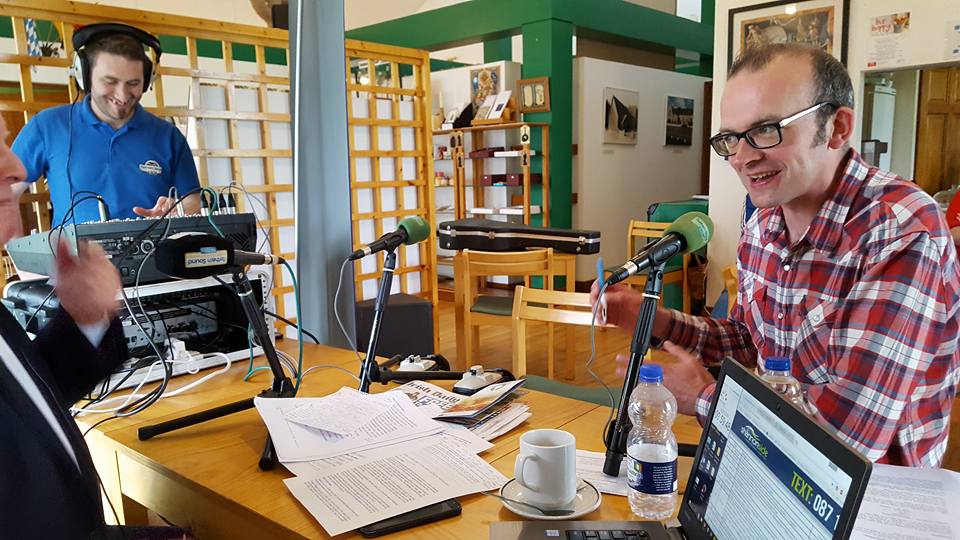
Ronan Casey of the Living Bog being interviewed on the Joe Finnegan Show on Shannonside Northern Sound at St Kilian’s Heritage Centre in Mullagh ahead of Heritage Week 2017
The €5.4 million ‘The Living Bog’ project was officially launched on Friday, September 15, 2017 at Europe’s largest raised bog – Clara Bog in Offaly – by the Minister for Culture, Heritage and the Gaeltacht, Heather Humphreys T.D.
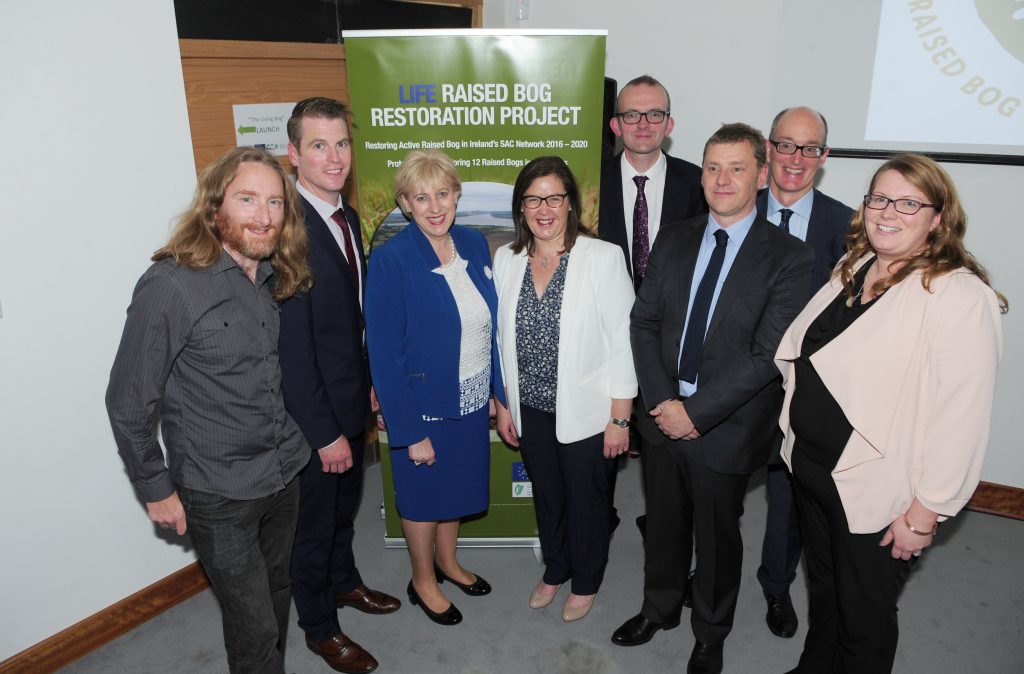
Minister for Culture, Heritage and the Gaeltacht Heather Humphreys TD pictured (third from left) with Living Bog team members (from left) William Crowley, Jack McGauley, Evelyn Slevin, Ronan Casey and John Cody. Also in the picture are Brian Lucas and Suzanne Nally from the Peatlands Unit with the Dept of Culture, Heritage and the Gaeltacht. Pic: James Flynn APX.
A large attendance was present at the award-winning Clara Bog Visitor Centre, close to the bog, for the official launch. Many community groups and individuals who have a connection to each of the 12 project sites were present at the launch, as were many political, governmental, environmental, NGO, and media individuals, as well as EU LIFE officials and a host of peatland dignitaries, activists and local landowners and farmers. The project is funded by the European Union’s LIFE Programme for Nature and Biodiversity projects and the Irish government’s Department of Culture, Heritage and the Gaeltacht.
Minister Humphreys said from an international perspective, the raised bogs of Ireland are among the most important near-natural eco-systems, and she thanked the LIFE Programme for its support in ensuring they will be enjoyed by generations to come. She said the 12 project sites could form a key part of a ‘Peat District’ in Ireland, which would attract visitors from all over the world. She equated the total area of raised bog habitat that Living Bog restoration work will improve to be akin to 7,000 major sports stadia.
The project sites (and nearest towns) are:
- Ardagullion Bog SAC, Edgeworthstown/Granard, Co Longford
- Garriskil Bog SAC, Mullingar, Co Westmeath
- Raheenmore Bog SAC, Daingean, Co Offaly
- Mongan Bog SAC, Clonmacnoise, Co Offaly
- Clara Bog SAC, Clara, Co Offaly
- Ferbane Bog SAC, Ferbane Co Offaly
- Moyclare Bog SAC, Ferbane, Co Offaly
- Sharavogue Bog SAC, Birr, Co Offaly
- Derrinea Bog SAC, Co Roscommon
- Carrowbehy Bog SAC, Co Roscommon
- Carrownagappul Bog SAC, Mountbellew, Co Galway
- Killyconny Bog, Mullagh, Co Cavan/Meath.
1% OF THE BOGS LEFT
The Minister hopes the 12 bog project will be the start of a major re-appreciation of Ireland’s last remaining raised bogs. Just 1% of the 850,000 acres of active, living raised bog mapped in the early 1810’s by Richard Lovell Edgeworth and others remains, and this alone accounts for almost 50% of the active, living raised bog in Western Europe.
“This is biggest single raised bog restoration project in the history of the state. It will see an area of raised bog the equivalent of 7,000 Croke Parks brought back to life. The project, in consultation with landowners and local communities, will use active restoration measures to establish suitable conditions for peat to once again form on the bogs. I hope this project will go towards the creation of a ‘Peat District’ for Ireland – an area of raised bogs which will give visitors a chance to discover 10,000 years of history.
“As an education and tourism resource, the natural eco-system that is a raised bog is without equal in Ireland. ‘The Living Bog’ team will encourage youngsters from National School level right up to University to visit project sites to learn more about this unique landscape. The project will also support community-led amenities at the bogs, with new walking trails and boardwalks being developed as the bogs become educational and environmental amenities.”
At launch, Minister Humphreys announced that amenity provision is to be developed for five sites and she was delighted to note the Living Bog team have been working with local community groups, and engaging with other government and local authorities to develop plans for amenities with the local groups.
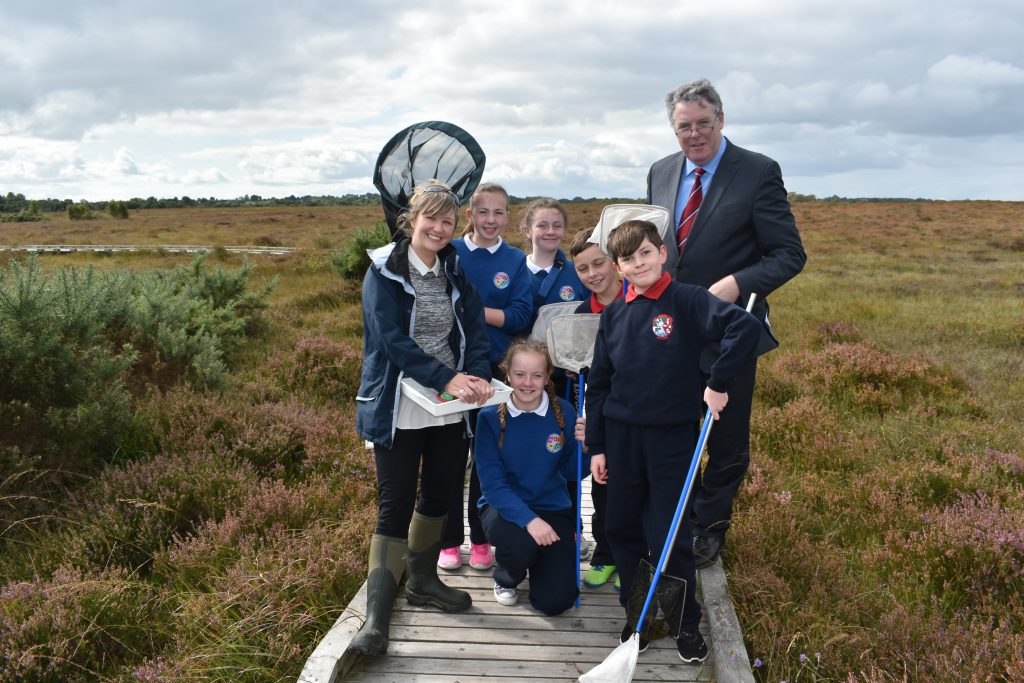
RTÉ’s news reporter and midlands editor Ciaran Mullooly reported on The Living Bog launch, bringing Clara Bog to hundreds of thousands of TV viewers and millions online. Local schoolchildren from Scoil Bhride and Scoil Phroinsias Naofa brought Ciaran on a tour of the bog with guides Rebecca Dobson of Clara Bog Visitor Centre and George Smith of The Living Bog.
The Living Bog team will be extending their community reach over the coming months, and will also be developing a schools programme with hundreds of schools. The project is also creating a history of midlands bogs and have urged locals in all 7 counties who have bog memories – be they of wildlife, work and tall tales – to contact them via email life@raisedbogs.ie or contact Ronan Casey at 076 1002627.
The launch and associated tour of Clara Bog were filmed by Irish national broadcaster RTÉ, and Midlands Editor and reporter Ciaran Mullooly created an impressive report which aired on the Irish national news at 6:01pm that day. It is also online HERE.
Well-known nature photographer Tina Claffey was among those at the launch and she was delighted to give the Minister the very first edition of her new bog photography book ‘Tapestry of Light’ to the Minister. The book has been part-supported by The Living Bog and the Department of Culture, Heritage and the Gaeltacht and is available nationwide in all good book stores and online HERE.
Below you will see a photo gallery from the launch.
You read about the launch on the Department website HERE
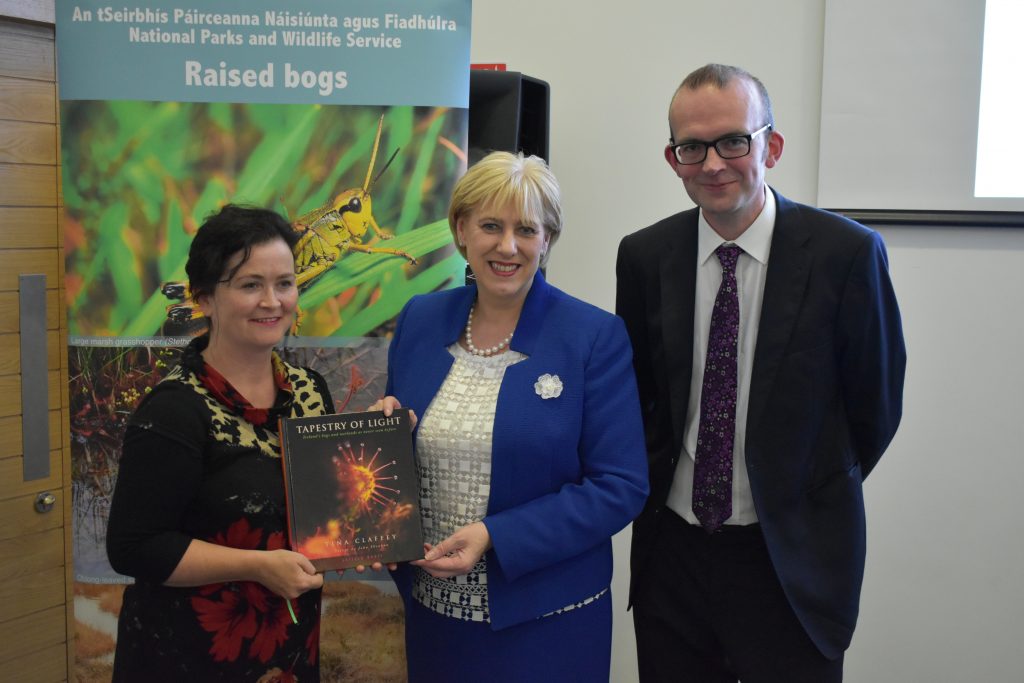
Birr nature photographer Tina Claffey presented the first copy of her new book ‘Tapestry of Light’, which was part-funded by ‘The Living Bog’ and the Department of Culture, Heritage and the Gaeltacht to Minister of Culture, Heritage and the Gaeltacht Heather Humphreys at the ‘Living Bog’ launch. She is pictured with Ronan Casey of ‘The Living Bog’.
By John Cody, Project Hydrologist
It is a long accepted fact that active bogs sequester carbon from the atmosphere and potentially contribute to mitigating human induced climate change. However the scale of this climate change mitigation potential has been the subject of debate. Bogs are dynamic ecosystems and a bogs status as a sink or source of atmospheric green house gases is determined by ecological and climatic conditions. Thus the role of an active bog in mitigating climate change is variable in time and space.
The National Parks and Wildlife Service, through The Living Bog project, has initiated a collaboration with scientists from Trinity College Dublin and Carl Stuart Group to monitor how much carbon is lost from raised bogs in discharge from drainage networks. This project will use a Florescent Organic Matter (FDOM) sensor and a YSI EXO2 Sonde to continuously monitor drainage discharge rates and concentrations of dissolved organic carbon and dissolved organic nitrogen from raised bog Special Areas of Conservation (SAC) sites to determine the mass of carbon and nutrients exported from the bogs through drainage.
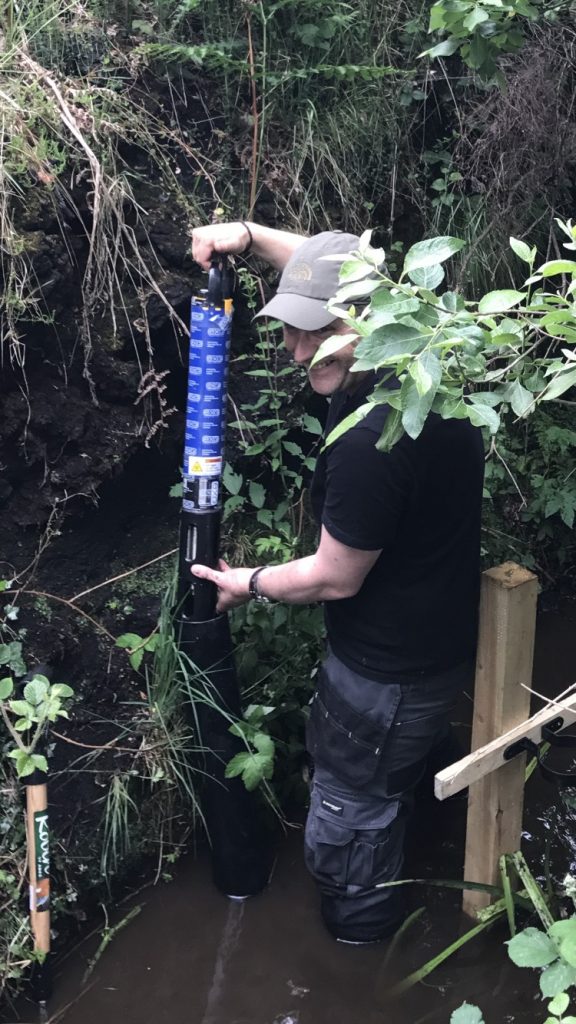
Project Hydrologist John Cody installs an EXO2 Sonde
Under natural conditions peat accumulates in an active peat forming layer known as the acrotelm, at a rate of about 1 mm per year, as the main peat forming plants- sphagnum mosses actively grow in the spring and summer, removing CO2 from the atmosphere and converting it to biomass through photosynthesis.
Similar to a deciduous forest, as the sunlight of summer yields to the creeping gloom of winter, active growth ceases. As the leaves begin to drop from the trees the living sphagnum of the summer dies back and litter accumulates in the pools and lawns of the bog. In a forest fallen leaves are rapidly decayed, returning the carbon stored in their tissues to the atmosphere as the green house gases carbon dioxide, methane and nitrous oxide. In contrast the unique conditions found in bog habitats prevents the decay of the sphagnum litter, causing an almost imperceptible growth in the acrotelm, giving active bogs the ability to sequester carbon from the atmosphere.
Sphagnum mosses make the water in the acrotelm layer acidic enough to inhibit the bacterial decay processes. In addition to the acidity of the water, the water logged nature of the acrotelm results in anoxic conditions below the surface, further impeding aerobic decay processes. Thus an undisturbed acrotelm actively maintains the conditions for peat formation.
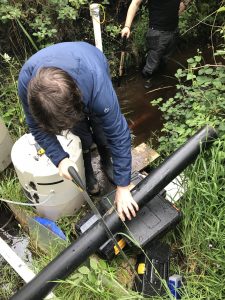
Dr Shane Regan installing the stilling well and static tube for the EXO2 Sensor
The plumes of peat smoke rising from chimneys all over Ireland in the winter air are the visible return of carbon dioxide to the atmosphere that was removed and stored in the living bogs several thousand years ago, perhaps at a time when climate change was driving the extinction of woolly mammoths. The process of carbon loss from the bogs does not end there. In order to produce peat for the fire several meters depth of the bog will have been disturbed establishing an ongoing, destructive feedback loop.
The drainage required to allow peat exploitation causes increased water discharge from the bogs, resulting in dissolved and particulate carbon losses in drainage discharge. The lowered water levels expose large areas of peat to the atmosphere, allowing microbial decay, which results in a continuous, invisible release of green house gases. In addition to CO2 these decay processes produce methane, which is 30 times more potent as a green house gas than carbon dioxide. As the bog dries the sphagnum dies back causing a reduction in the acidity of the bog waters further reducing the bog’s ability to actively sequester carbon.
The Living Bog project is a 5 year conservation project, funded through the European Union LIFE Nature and Biodiversity fund and the Department of Arts, Heritage, Regional, Rural and Gaelteacht Affairs. It’s objective is to restore peat active peat forming conditions on 12 raised bog SAC’s previously impacted by turf cutting. In the process the project will monitor the impact of restoration on the rates of export of carbon from in drainage from the sites.
The Living Bog project is the first time that FDOM sensors have been deployed in monitoring dissolved organic carbon in discharge from the bogs. The deployment of these sensors in terrestrial environments has only begun recently, as climate scientists have begun to recognise the importance of dissolved organic matter in terrestrial nutrient cycles. Carl Stuart Group and YSI have agreed to donate an EXO2 Sonde free of charge to the project for six months. The Sonde has been installed at an existing monitoring CO2 point on Clara bog, established by Trinity College.
Previously this monitoring point had employed traditional Grab sampling approaches. One of the limitations of this approach is that it is difficult to detect changes in carbon concentrations in response to storm events. The ability to continuously monitor flow rates and concentrations simultaneously provided by the EXO2 Sonde will allow researchers to quantify the mass of dissolved carbon exported from the bogs, and factors that influence background rates.
It is expected that through these activities the Living Bog project can begin to quantify the contribution of Irish raised bogs in carbon sequestration, and whether in fact your local bog can help save the planet.
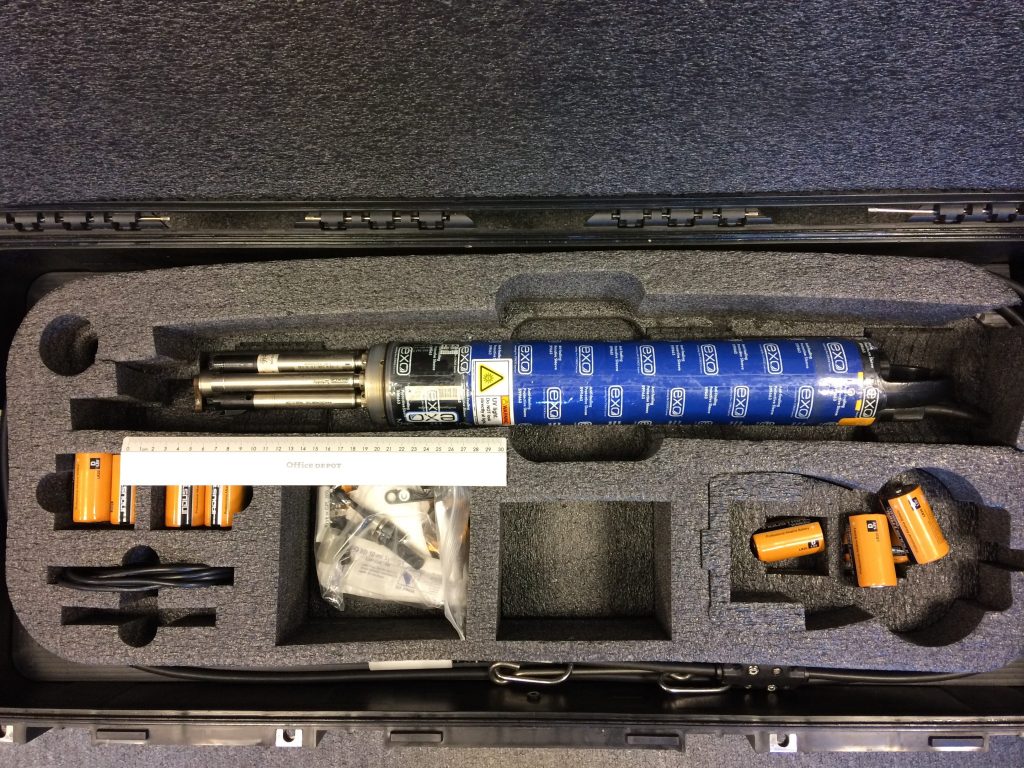
The kit, with thanks to the Carl Stuart Group
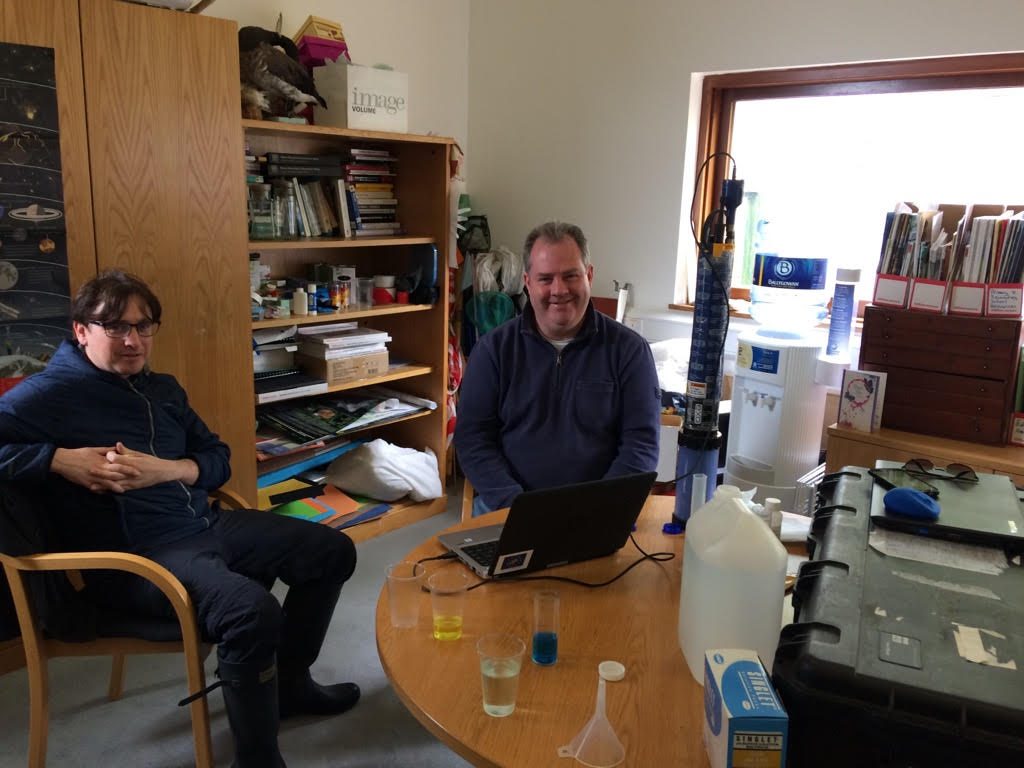
Dr Shane Regan (TCD) and Dr Ken Scally (Carl Stuart Group) prepare the EXO2 Sonde for deployment
